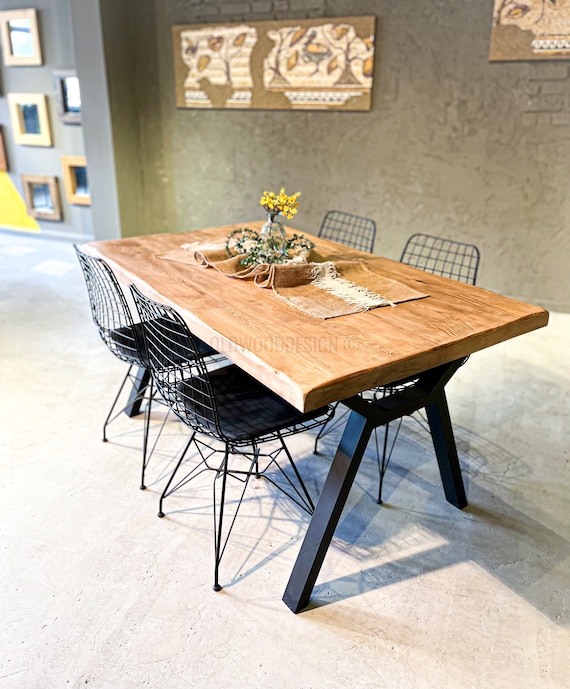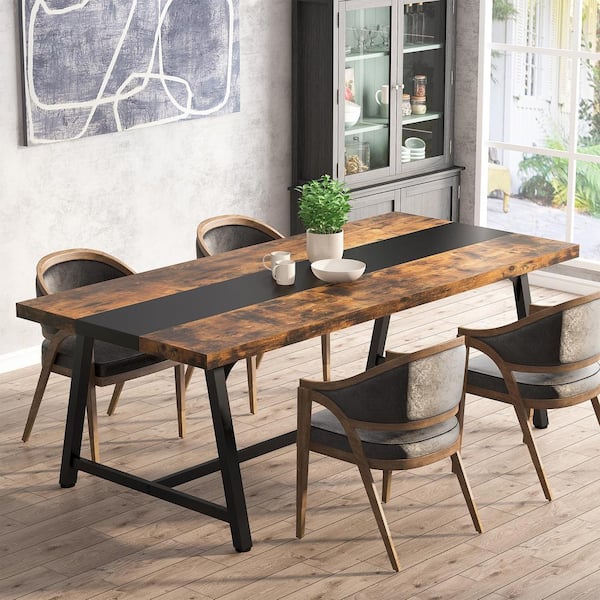Add Toughness and Appeal Making Use Of Solid Dining Table Legs Wood Parts
Add Toughness and Appeal Making Use Of Solid Dining Table Legs Wood Parts
Blog Article
What to Take Into Consideration When Picking Table Legs Timber for Your Home.
When selecting timber for eating table legs, several vital factors require careful factor to consider to guarantee both functionality and aesthetic charm. The type of timber selected can substantially influence the table's sturdiness, security, and overall design, while the upkeep requirements may affect long-term use. Additionally, the interaction of grain patterns and shade with existing furnishings can develop a cohesive layout. Understanding these aspects is important, yet many ignore the important element of financial restrictions. As we check out these considerations even more, the implications of your options might expose unexpected difficulties and chances.

Value of Timber Type
When choosing eating table legs, the selection of timber type plays an essential duty in establishing both visual appeals and toughness. Different timber types supply differing levels of toughness, weight, and resistance to wear, which can significantly affect the capability and long life of the table. Woods such as oak, maple, and cherry are usually preferred for their robust nature and capability to endure day-to-day use. These timbers not just give architectural stability yet additionally stand up to damages and scratches better than softer options.
Alternatively, softer woods like poplar or ache, while more cost-efficient, may not provide the exact same level of longevity and may require even more frequent upkeep or substitute. The wood type additionally influences the table's capability to endure ecological aspects such as moisture and temperature fluctuations. In addition, the selection of timber can impact the convenience of discoloring and ending up, which can be important for achieving the preferred look.
Aesthetic Considerations
The aesthetic allure of table legs dramatically adds to the general aesthetic of the dining space. Dining Table Legs Wood. When choosing timber for eating table legs, the grain color, pattern, and surface are essential components that can boost or take away from the space's layout. Different wood kinds show differing shades and structures; as an example, oak offers a timeless look with famous grain, while walnut supplies an abundant, dark sophistication
In addition, the shape of the legs plays an important function in specifying the table's personality. Sleek, minimal legs can produce a contemporary feel, while more luxuriant, transformed legs stimulate traditional charm. The design of the legs should balance with existing furnishings and the general theme of the room, whether it be rustic, modern-day, or transitional.
It is also important to consider exactly how the legs engage with other furnishings items, including chairs and sideboards. A natural layout not just raises the eating experience however additionally adds to the home's overall aesthetic coherence. Inevitably, the option of table legs need to be a thoughtful decision that mirrors individual preference while making sure aesthetic consistency within the space.

Longevity and Stability
Resilience and stability are crucial variables in the selection of dining table legs, as they directly influence the longevity and safety and security of the furnishings. When choosing wood for dining table legs, one need to take into consideration the integral residential or commercial properties of various timber types. Woods, such as oak, maple, and cherry, are commonly chosen for their stamina and resistance to use, making them suitable for high-traffic eating locations.
Along with the kind of wood, the building approach likewise plays a substantial function in the total security of the table. Legs that are well created, either with traditional joinery strategies or contemporary engineering approaches, will certainly supply improved support and stop wobbling. It is essential to evaluate the density and style of the legs; thicker legs are generally much more secure and can hold up against greater weight.
Furthermore, the environmental problems in which the table will certainly be used can influence sturdiness. Timber that has actually been correctly treated for wetness resistance will perform better in damp settings. Ultimately, choosing the best combination of sturdy wood and secure building and construction will certainly guarantee that your table continues to be a practical and safe focal point in your house for years ahead.
Upkeep Demands
Choosing table legs made from resilient wood is just the beginning; comprehending upkeep needs is just as important to preserve their appearance and performance. Various wood types require differing levels of treatment, so it is vital to understand what is required for your details choice.
Normal cleaning Dining Table Legs Wood is fundamental; make use of a soft, moist fabric to eliminate dirt and debris. Avoid extreme chemicals that can harm the surface. For timber surfaces like varnish or lacquer, periodic brightening with furniture wax can boost luster and give a protective layer versus scrapes.
Preventative steps are important too. Usage rollercoasters and placemats to prevent direct contact with warm or wet items, which can warp or stain the timber. In addition, consider putting really felt pads under the legs to avoid scratches on your flooring and minimize use on the wood
Humidity control is another significant factor; preserving a stable setting assists to avoid warping and cracking. Take into consideration utilizing a humidifier or dehumidifier as necessary. if your eating like it location is vulnerable to variations in temperature level and moisture.
Spending Plan and Cost Variables
When preparing to purchase eating table legs, comprehending budget plan and cost aspects is vital to make an informed decision. The kind of timber chosen for the legs dramatically influences the general cost.
Labor and craftsmanship also play an essential role in the general expenditure. Handmade or artisan-crafted legs might bring a costs price tag, mirroring the skill and time purchased their creation. It's critical to analyze the balance between high quality and cost; spending extra upfront can result in a longer-lasting item that needs much less maintenance in time.
Conclusion
In summary, choosing the ideal wood for dining table legs necessitates cautious consideration of different variables, including timber kind, visual allure, resilience, maintenance, and budget plan restrictions. The selection of woods such as oak and maple can improve both stamina and visual allure, while softer woods might be extra affordable but less long-lasting. Eventually, a well-informed choice pertaining to material option will add to the total capability and durability of go to this web-site the table, making sure an important financial investment for the home.
When picking timber for eating table legs, a number of vital elements require cautious consideration to make sure both performance and aesthetic allure.When selecting dining table legs, the choice of timber kind plays a critical duty in establishing both appearances and longevity. When selecting wood for eating table legs, the grain pattern, finish, and shade are essential components that can detract or boost from the space's design. When selecting timber for eating table legs, one must think about the integral properties of various wood types.In summary, choosing the suitable wood for eating table legs necessitates mindful consideration of numerous variables, consisting of wood type, aesthetic appeal, upkeep, spending plan, and durability constraints.
Report this page